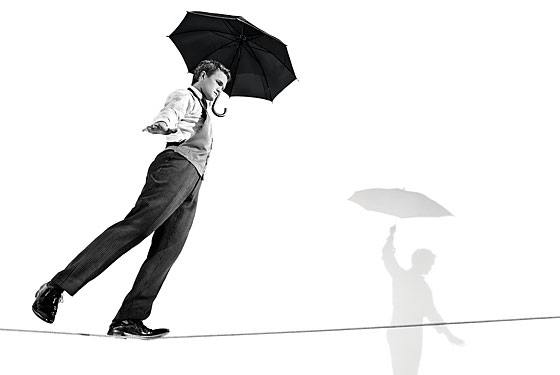 |
| image credit- http://images.nymag.com/arts/tv/profiles/nph090921_1_560.jpg |
Teaching is a high wire act of the highest difficulty. The best make it look effortless unless they want it to look difficult, are terrified even when they are outwardly calm, and are meticulously planned.
A high wire act does not come together overnight. Maths and planning and practice happen over and over because sometimes that's literally the difference between life and death. Sometimes you have a net and it's the difference between triumph and embarrassment.
I assume wire walkers fall a lot when they are learning. And I assume the learning curve is difficult enough that only those called to the wire last. It's a small group of brave men and women. It can be learned, it's a skill as much as a talent, but there are those with naturally better balance. Sure, someone might learn to walk across a wire, but ride a bike? Juggle? Even walk backwards? Those are skills only a certain madness will allow.
We walk a wire in the classroom. Behavior plans, even the strongest, can be made to feel like a piece of thin metal stretched tight in a stiff breeze given the right circumstances. Lessons when there is no observation can still feel as though we had better not look down, never doubt for an instant once you're in it and going. Yes, doubt beforehand. Question and plan and prepare but once you're out on that wire you need to make it to the other end. The audience is depending on you.
Our students are right on the wire with us. Some readers might have rolled their eyes, "Once again Doug is putting himself (literally) above his students. Like with the rock star thing." But that's not trying hard enough to extend the metaphor. Each of our kids walks her or his own wire. Some, again, make it look easy, fairly sprinting from one post to the next. Others inch out on the wire, clinging with knuckles white and knees a'tremble.
How do you teach a wire walker? You can't walk with them, can you? A master walker must stand on the opposite platform and coach from there. You need to let the fledgling walker find her own balance. He needs to hit the net a few times. You give the walker a bar to balance, maybe even a safety harness to slow or stop the fall. Still, they must walk on their own.
As a walker's confidence grows the choice may be made to go higher, though I assume if you're indoors it's just as difficult to walk over ten feet of air as it is to walk over fifteen or twenty or fifty feet. It's like saying you can swim in the deep end or the shallow end. The danger in the fall is already there.
Praise the brave, the crazy, high wire walkers. In ourselves, and in our classrooms, under each of our own Big Tops.
Related- You should check out this doc, it's really great. Joseph Gordon Levitt is starring in a feature about the same thing that I haven't seen but just came out.
No comments:
Post a Comment